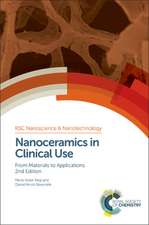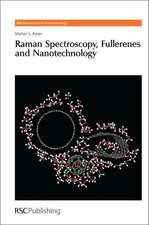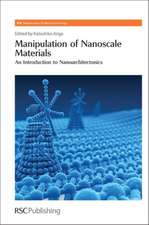Dynamical Symmetries for Nanostructures: Implicit Symmetries in Single-Electron Transport Through Real and Artificial Molecules
Autor Konstantin Kikoin, Mikhail Kiselev, Yshai Avishaien Limba Engleză Hardback – 2 dec 2011
Preț: 668.68 lei
Preț vechi: 786.68 lei
-15% Nou
Puncte Express: 1003
Preț estimativ în valută:
127.95€ • 133.60$ • 105.66£
127.95€ • 133.60$ • 105.66£
Carte tipărită la comandă
Livrare economică 15-29 aprilie
Preluare comenzi: 021 569.72.76
Specificații
ISBN-13: 9783211997239
ISBN-10: 3211997237
Pagini: 350
Ilustrații: XIII, 351 p. 129 illus.
Greutate: 1.2 kg
Ediția:2012
Editura: SPRINGER VIENNA
Colecția Springer
Locul publicării:Vienna, Austria
ISBN-10: 3211997237
Pagini: 350
Ilustrații: XIII, 351 p. 129 illus.
Greutate: 1.2 kg
Ediția:2012
Editura: SPRINGER VIENNA
Colecția Springer
Locul publicării:Vienna, Austria
Public țintă
ResearchCuprins
1 Introduction.- 2 Hidden and Dynamical Symmetries of Atoms and Molecules.- 3 Nanostructures as Artificial Atoms and Molecules.- 4 Dynamical Symmetries in the Kondo Effect.- 5 Dynamical Symmetries in Molecular Electronics.- 6 Dynamical Symmetries and Spectroscopy of Quantum Dots.- 7 Dynamical Symmetries and Non-Equilibrium Electron Transport.- 8 Tunneling Through Moving Nanoobjects.- 9 Mathematical Instrumentation.- 10 Conclusions and Prospects.- Index.- References.
Textul de pe ultima copertă
Group theoretical concepts elucidate fundamental physical phenomena, including excitation spectra of quantum systems and complex geometrical structures such as molecules and crystals. These concepts are extensively covered in numerous textbooks. The aim of the present monograph is to illuminate more subtle aspects featuring group theory for quantum mechanics, that is, the concept of dynamical symmetry. Dynamical symmetry groups complement the conventional groups: their elements induce transitions between states belonging to different representations of the symmetry group of the Hamiltonian. Dynamical symmetry appears as a hidden symmetry in the hydrogen atom and quantum rotator problem, but its main role is manifested in nano and meso systems. Such systems include atomic clusters, large molecules, quantum dots attached to metallic electrodes, etc. They are expected to be the building blocks of future quantum electronic devices and information transmitting algorithms. Elucidation of the electronic properties of such systems is greatly facilitated by applying concepts of dynamical group theory.
Caracteristici
Group theory complemented with the concept of dynamical symmetry Introduces and applies the concept of dynamical symmetry for systems out of equilibrium Includes supplementary material: sn.pub/extras















